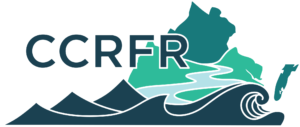
Fall will soon be here and as children get ready to head back to school, coastal residents brace for the annual hurricane season. Coastal storms threaten communities with high winds and inundation but in low-lying areas throughout our region, recurrent flooding has become a regular nuisance.
In some areas, like Norfolk, Virginia, even high tides can flood streets and homes. As sea levels continue to rise, local communities are challenged with understanding the science, policy, available response options and economic implications of rising waters.
As a way to help communities and leverage multiple resources on the issue, in 2016 Virginia’s General Assembly established the Commonwealth Center for Recurrent Flooding Resiliency (CCRFR). The new Center includes CRC members Old Dominion University (ODU) and the Virginia Institute of Marine Science (VIMS), as well as the Virginia Coastal Policy Center at William & Mary Law School. Together they form a virtual Center to provide coordinated, up-to-date research, technical support, and policy guidance related to sea level rise and ongoing flooding issues.
The new Center synthesizes data and information from multiple sources to provide an easier one-stop-shop resource for local government staff, emergency planners, state agencies, and others. For example, CCRFR is working to update and expand Tidewatch, a publicly accessible water level forecasting tool- developed at VIMS that provided 36-hour projections of water levels at tide gauge stations – to provide 48-hour projections of tidal inundation throughout Tidewater Virginia. This will enable CCRFR to combines state of the art science with high resolution modeling to predict street level flooding from storm surge and rain events.
The CCRFR allows for multi-disciplinary collaboration to address coastal resiliency in terms that local governments and residents need. For example, the CCRFR partners are working together closely with a stakeholder workgroup to research and advise as to alternative approaches to stormwater regulation in rural Tidewater at the request of the General Assembly in 2017. Upcoming reports will look into the opportunities to grow a water technology sector in Hampton Roads and increase resilience in the tourism industry. Other initiatives include economic impact analysis around key issues like the impact of flooding events on the real estate market, tourism, and opportunities for new water management systems and improved risk communication.
Emily Steinhilber, who coordinates the CCRFR at Old Dominion says that “in its first year, CCRFR partners have leveraged their complementary academic expertise to provide essential research and bring additional funds to Virginia, we look forward to growing and supporting our communities more in the years to come.”
CCRFR not only fills a need for communities and residents looking for guidance, but it is also an attractive model for funders because of its collaborative and applied research mission. The Center is not a granting agency, but rather a virtual research center with a focus on partnerships to leverage limited funds.
